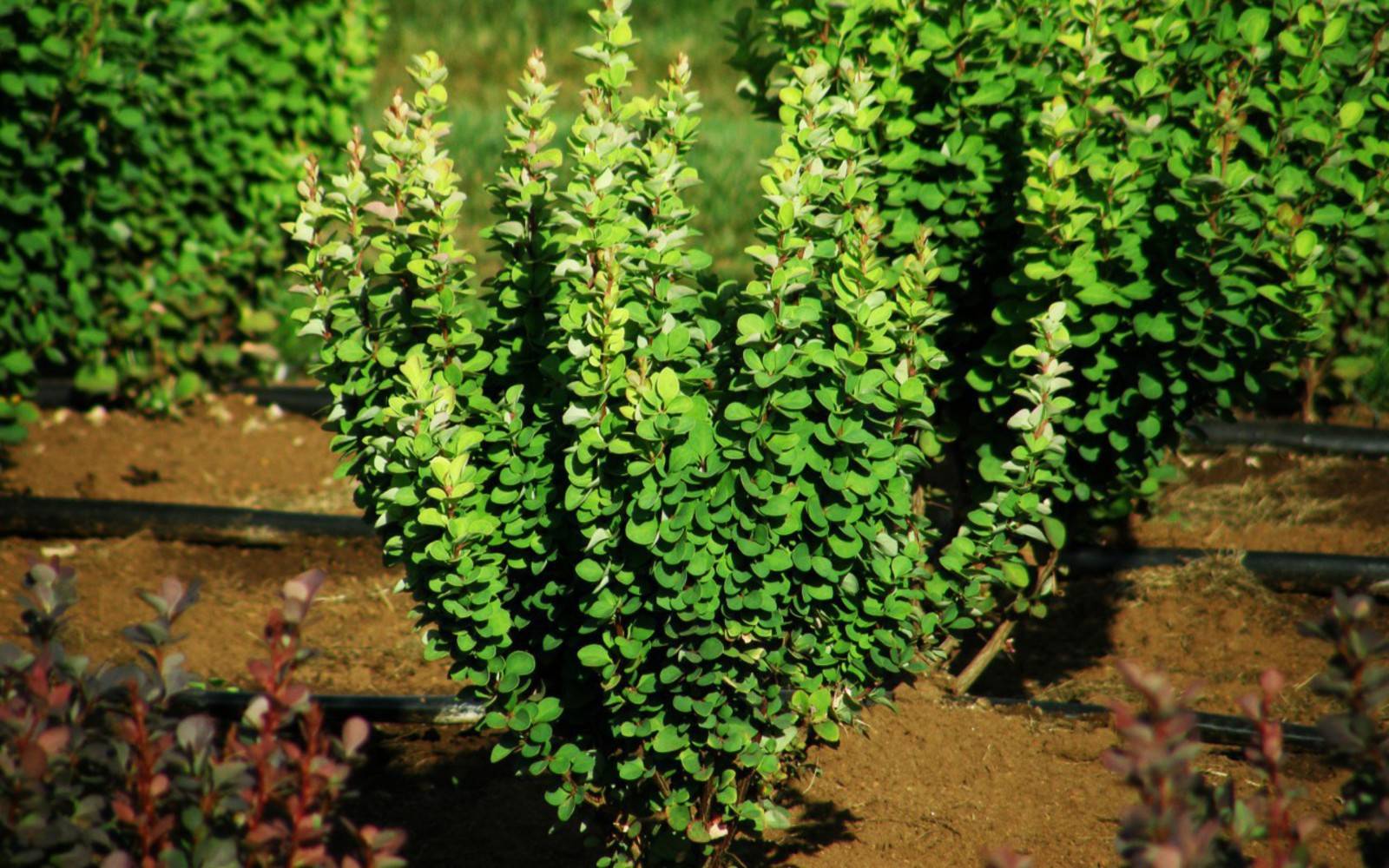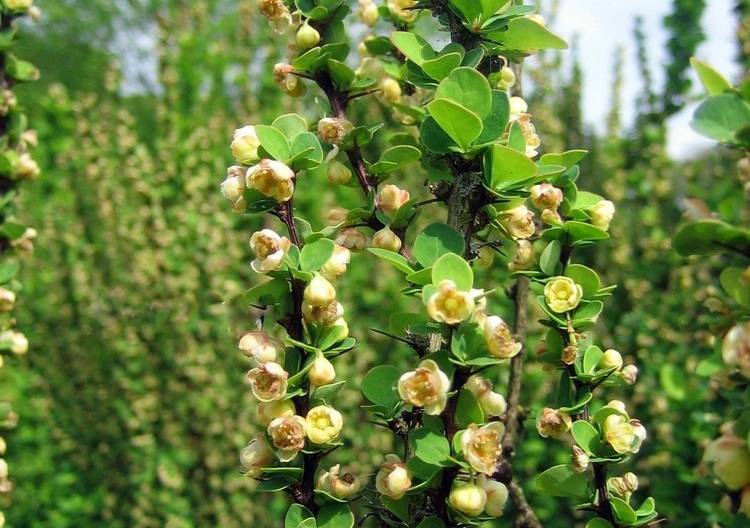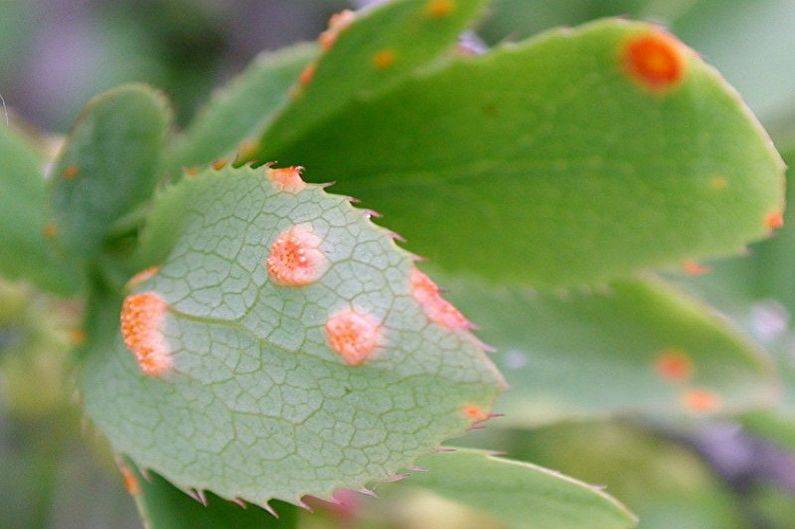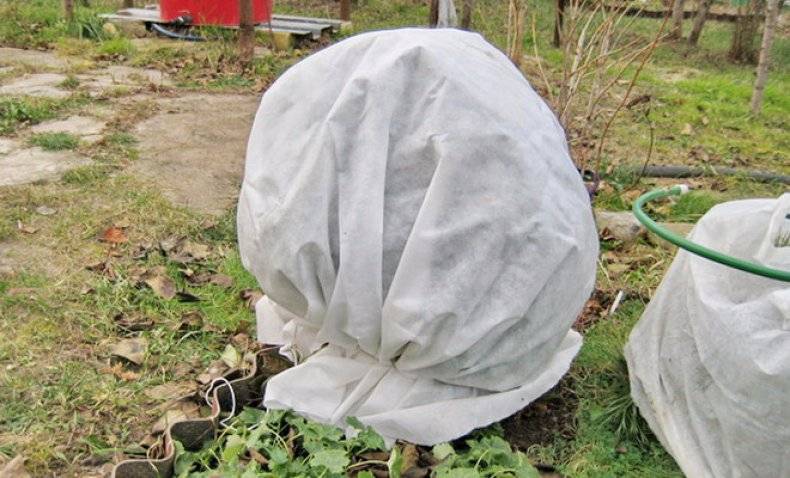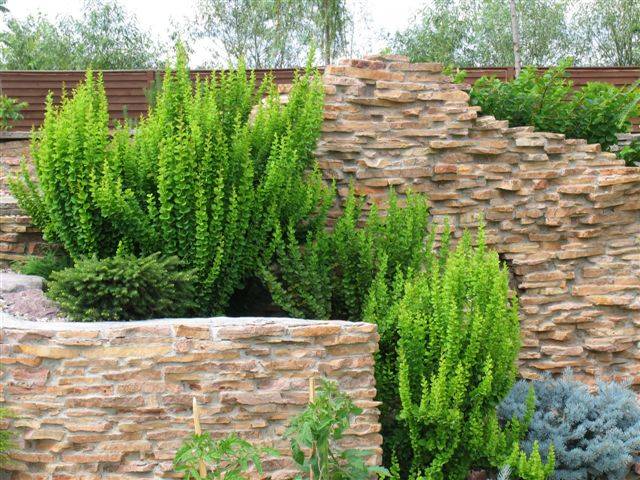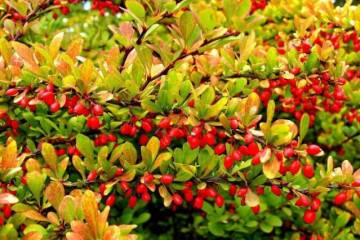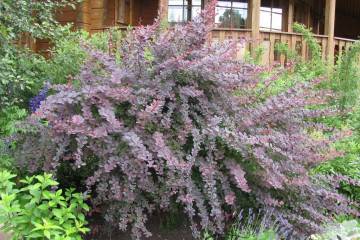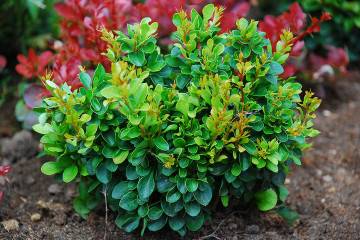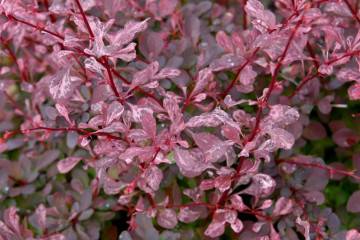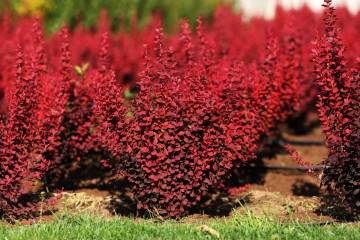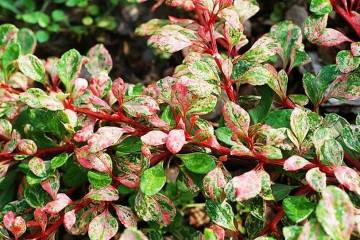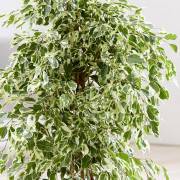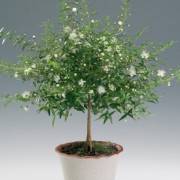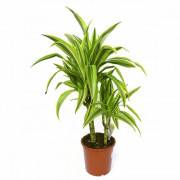Barberry Erekta - planting and care, description
Content:
Any shrub is able to decorate the garden area and bring comfort to it. Shrubs are especially valued for their variegation, variety of colors and forms of leaves. The barberry (Berberis) plant, which is in demand in the middle latitudes, meets all these criteria, the Erekta variety of which has the most pleasant appearance.
Description of barberry Erecta
The plant belongs to the Barberry family. The description of the barberry Erekt, referring to Thunbergii in mind, is slightly different from the rest. The height of a tall bush reaches 1.5 m, in rare cases this figure can be 2 m.On the standing shoots, glossy fleshy leaf plates of rich green color are densely located, which are small and round, slightly elongated at the sinuses.
Planting a plant
Barberry Erekta is recommended to be planted in well-lit places, otherwise the leaves of the bush will lose their decorative effect without sunlight. Also, do not plant a bush in low-lying areas so that moisture cannot stagnate at the roots.
It is necessary to plant barberry seedlings in the spring or autumn. For planting, a substrate should be prepared from sod land, river sand and humus.
Planting from seeds
In autumn, seeds are separated from ripe fruits and washed thoroughly. After they are placed in a solution of potassium permanganate for disinfection. The planting material must be dried, only after that you can put it away for storage.
In early spring, seeds are planted in a pot with a substrate. The planting depth should be no more than 3 cm. The container is covered with a film and periodically sprayed with water.
Planting seedlings in open ground
For each seedling, pits are dug with a depth of 30 or 50 cm, if a layer of drainage material is laid out on the bottom. On top of the drainage, it is necessary to fill in a little substrate and only then plant the strongest and tallest bushes. From above you need to pour soft water and mulch the ground with peat or sawdust.
How to care for Erecta barberry
Barberry Thunberg Erecta does not require special skills and hassle in care, the main thing is to carry out all activities regularly.
Watering
Barberry Electra does not like an excess of moisture in the soil, so it can tolerate summer drought without consequences. Regular watering twice a week should be done only during the dry summer period. In rainy times, you don't need to water the bush at all.
Top dressing
You need to feed the plant, guided by the following rules:
- apply nitrogen-containing fertilizers only before and after flowering;
- in the summer, feed with granular mineral fertilizers;
- in the fall, add potassium-phosphorus preparations;
- for the entire season, it is necessary to apply fertilizers rich in minerals at least 3 times.
Pruning
Pruning is carried out to thin out the dense crown of Erekta. If this is not done, then the shoots can weaken, and the leaves become small and dull. Dried and rotten leaves and branches are also subject to removal, which must be cut off almost to the base of the bush.
Reproduction methods
Barberry Thunberg Erecta is propagated in four ways:
- cuttings. Lateral shoots are cut 15-20 cm long. Then they are planted in a substrate for rooting;
- air layering. The extreme branches are bent to the ground and covered with soil, leaving the top of the shoot sticking out. When they take root, they are separated from the main bush and transplanted to another place;
- dividing the bush. They dig a bush and divide it into several identical parts, which are seated in separate holes;
- seeds. The method has been described in detail above.
Transfer
A transplant must be carried out every 10-15 years, since the soil, even with regular feeding, loses its nutritional qualities. Moreover, the likelihood of the appearance of various diseases is high. The optimal time for such transplants is late summer or early autumn. Before transplanting, the bush is watered abundantly, and then all its shoots are removed, leaving 3-5 cm above ground level.
Diseases and pests
Erecta is a healthy variety, but it can also get sick. Most often, the bush suffers from stagnation of water in the soil. Among the diseases, powdery mildew is distinguished, in which a white bloom appears on the aerial part of the bush. Often, barberry gets sick with rust when the leaf plates are covered with yellow-brown spots. Fungicides will help with the disease.
Erecta from pests can be affected by aphids, which suck the juices from the foliage and eat them. The bush begins to turn yellow and dry out. Shoots also lose their strength and dry out. Insecticides will help to cope with parasites.
Flowering period
The flowering of the Erecta barberry is not very noticeable, since the flowers located among the dense foliage are not always visible from a long distance. The bush begins to dissolve the buds in the middle of summer and continues until September, when fruits appear in place of the flowers. The flower petals are white in color and are collected in bowl-shaped inflorescences. In the middle of each bud there are small yellow stamens.
Preparing for winter
For wintering, the shrub is collected and wrapped with wire. From above, the barberry is covered with a tarp or any dense material. If the bush is cut at the root, then it is enough to cover it with dry foliage and spruce branches.
Use in landscape design
Barberry Erecta is widely used in landscape design. The shrub gives the garden a luxurious look, ennobling it and visually increasing the area of the site. The compact and discreet plant dilutes well any garden compositions.
Barberry Erecta is best combined with low shrubs with different leaf colors. Also, the plant looks spectacular in flower beds and flower beds. But most often, from the many planted bushes, Erects form low hedges.
Beneficial features
Barberry Erecta contains many useful properties:
- enhances immunity;
- acts as a diuretic;
- normalizes the digestive tract;
- relieves inflammation;
- soothes in nervous conditions.
Planting and leaving the barberry Thunberg Erekt is not difficult. You just need to regularly water, fertilize and prune the bush to grow a healthy plant with a dense crown.
